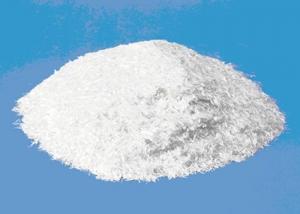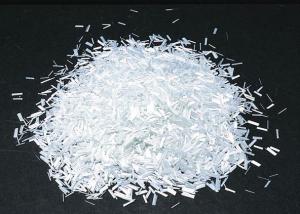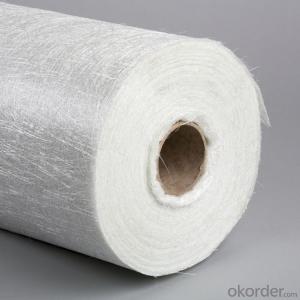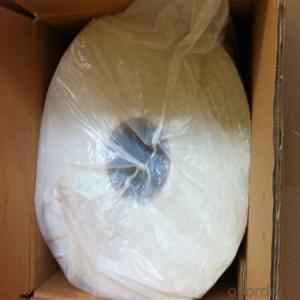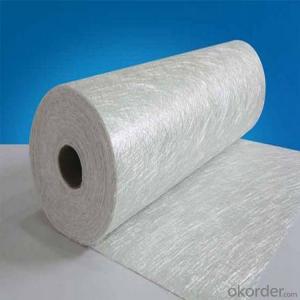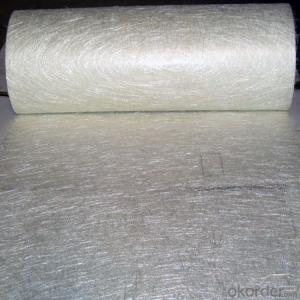E-Glass Fiber Chopped Strands For BMC
- Loading Port:
- China Main Port
- Payment Terms:
- TT or L/C
- Min Order Qty:
- 1 ton kg
- Supply Capability:
- 500 Tons Per Month kg/month
OKorder Service Pledge
OKorder Financial Service
You Might Also Like
Introduction of E-Glass Fiber Chopped Strands For BMC
E-Glass Chopped Strands for BMCare widely used in transportation,construction,electronics,chemical industry and light industry,such as the automotive parts,insulator,and switch boxes.
Product Features of E-Glass Fiber Chopped Strands For BMC
1.Low viscosity and excellent flowability of the BMC paste
2.Low static and low fuzz, fast and good dispersion in resins
3.Good processing and excellent mechanical properties
Packaging of E-Glass Fiber Chopped Strands For BMC
The product can be packed in bulk bags, heavy-duty box and composite plastic woven bags;
For example:Bulk bags can hold 500kg-1000kg each; Cardboard boxes and composite plastic woven bags can hold 15kg-25kg each.
Storage of E-Glass Fiber Chopped Strands For BMC
Unless otherwise specified, fiberglass products should be stored in a dry, cool and rain-proof area. It is recommended that the room temperature and humidity should be always maintained at 15ć-35ćand 35%-65% respectively.
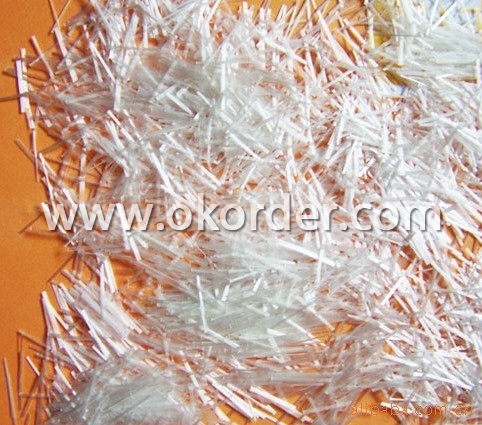
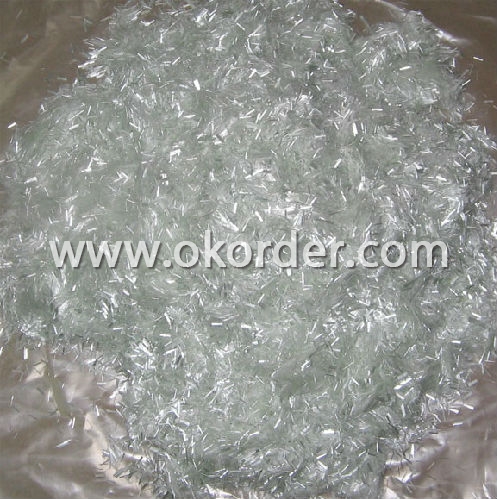
- Q:What are the advantages of using fiberglass chopped strand in the aerospace industry?
- There are several advantages of using fiberglass chopped strand in the aerospace industry. Firstly, fiberglass chopped strand is known for its high strength-to-weight ratio, making it an ideal material for constructing lightweight aircraft components. This characteristic allows for fuel efficiency and increased payload capacity, which are crucial factors in the aerospace industry. Secondly, fiberglass chopped strand offers excellent resistance to corrosion and chemicals, which is essential for aircraft that are exposed to harsh environmental conditions. This resistance ensures the longevity and durability of the components, reducing the need for frequent repairs or replacements. Additionally, fiberglass chopped strand has excellent electrical insulation properties, making it suitable for various electrical applications in aircraft. This insulation characteristic prevents electrical interference and promotes safer and more reliable operation of aerospace systems. Moreover, fiberglass chopped strand is highly versatile and can be easily molded into complex shapes, allowing for intricate designs and customization. This flexibility enables manufacturers to create aerodynamically efficient structures, contributing to improved performance and reduced drag in aircraft. Furthermore, fiberglass chopped strand has low thermal conductivity, making it an excellent choice for insulation purposes. This feature helps to regulate temperature within the aircraft, enhancing passenger comfort and reducing energy consumption. Lastly, fiberglass chopped strand is a cost-effective option compared to other materials used in the aerospace industry. Its availability and ease of manufacturing contribute to lower production costs, making it an attractive choice for aircraft manufacturers. In conclusion, the advantages of using fiberglass chopped strand in the aerospace industry include its high strength-to-weight ratio, resistance to corrosion and chemicals, electrical insulation properties, versatility in design, thermal insulation capabilities, and cost-effectiveness. These benefits make it a preferred material for constructing lightweight, durable, and efficient aircraft components.
- Q:How does the diameter of fiberglass chopped strand affect its properties?
- The diameter of fiberglass chopped strand can significantly affect its properties. A smaller diameter usually results in increased surface area, which can enhance the bonding capabilities of the material. Additionally, a smaller diameter can lead to better dispersion within a matrix, resulting in improved mechanical properties such as tensile strength, impact resistance, and flexural strength. On the other hand, a larger diameter may provide greater stiffness but can also reduce the overall flexibility of the fiberglass. Therefore, selecting the appropriate diameter is crucial in order to achieve the desired properties for a specific application.
- Q:Can fiberglass chopped strand be used in the production of electrical connectors?
- Yes, fiberglass chopped strand can be used in the production of electrical connectors. Fiberglass chopped strand is a type of reinforcing material that is made from chopped fiberglass strands. It is commonly used in various industries, including electrical and electronics, due to its excellent electrical insulation properties. Electrical connectors are used to join electrical circuits together, and it is important for them to have good electrical insulation to prevent any electrical leakage or short circuits. Fiberglass chopped strand provides excellent electrical insulation properties, making it a suitable material for use in the production of electrical connectors. Additionally, fiberglass chopped strand is also known for its mechanical strength, chemical resistance, and durability. These properties make it ideal for use in applications where the connectors may be subjected to harsh environments or require high mechanical performance. Furthermore, fiberglass chopped strand can also be easily molded into different shapes and sizes, allowing for the production of connectors with complex designs. This flexibility in design makes fiberglass chopped strand a versatile material for the production of electrical connectors. In conclusion, fiberglass chopped strand can indeed be used in the production of electrical connectors due to its excellent electrical insulation properties, mechanical strength, chemical resistance, durability, and flexibility in design.
- Q:How does the fiber alignment affect the performance of fiberglass chopped strand?
- The performance of fiberglass chopped strand is significantly determined by the alignment of its fibers. The alignment refers to how the individual glass fibers are oriented and arranged within the chopped strand. When the fibers are randomly aligned, the material exhibits isotropic properties, meaning that its mechanical properties are the same in all directions. This random alignment allows the chopped strand to have good strength and impact resistance in multiple directions. It also increases the overall flexibility of the material, making it easier to handle and process during manufacturing. On the other hand, when the fibers are aligned in a specific direction, it creates an anisotropic material with varying mechanical properties depending on the orientation of the fibers. The strength and stiffness are higher in the direction of the fiber alignment, while they are relatively lower in perpendicular directions. This alignment is often achieved by applying tension during the manufacturing process, resulting in a more rigid and directional material. The fiber alignment also affects the ability of fiberglass chopped strand to reinforce other materials. When randomly aligned, the chopped strand can evenly distribute the load and provide reinforcement in multiple directions, making it suitable for applications requiring isotropic strength. Conversely, when aligned in a specific direction, it can provide enhanced reinforcement and stiffness along that axis, making it suitable for applications where directional strength is required. In conclusion, the fiber alignment in fiberglass chopped strand has a significant impact on its performance. Random alignment provides isotropic strength, flexibility, and impact resistance, while specific alignment results in anisotropic properties with higher strength and stiffness in the aligned direction. The choice of fiber alignment depends on the specific application requirements and the desired mechanical properties of the final product.
- Q:What are the typical packaging options for fiberglass chopped strand?
- Fiberglass chopped strand can be packaged in a variety of ways, including bags, boxes, and pallets. When dealing with smaller quantities, plastic or paper bags are commonly used. These bags are convenient and easy to handle, and they come in different sizes to accommodate different needs. For larger quantities, boxes or cartons made of corrugated cardboard are a suitable option. These boxes not only provide extra protection during transportation and storage but are also commonly used for commercial or industrial purposes. In certain situations, pallets can be used to package fiberglass chopped strand. This is especially useful for bulk orders or when large quantities of the product need to be transported. Pallets offer stability during handling and can be easily loaded onto trucks or shipping containers, making them ideal for long-distance transportation. Ultimately, the choice of packaging for fiberglass chopped strand depends on factors such as the quantity, intended use, and transportation requirements.
- Q:What are the typical thermal expansion characteristics of chopped strand composites?
- The typical thermal expansion characteristics of chopped strand composites are that they exhibit a low coefficient of thermal expansion. This means that they expand very minimally when exposed to heat and contract when cooled, making them suitable for applications where dimensional stability is important.
- Q:How does the fiber alignment of fiberglass chopped strand affect the strength of composites?
- The strength of composites greatly depends on the fiber alignment of fiberglass chopped strand. If the fibers are aligned in a particular direction, they contribute to the overall strength and stiffness of the composite material. This alignment also affects how stresses and strains are distributed within the composite structure. In composites, the fibers reinforce the matrix material, providing strength and rigidity. When the fiber alignment is random or unidirectional, the composite becomes more isotropic, meaning the strength is the same in all directions. This is useful in applications where the load is applied from all directions, like pressure vessels. However, when the fibers are aligned in a specific direction, the composite becomes anisotropic, with higher strength in the aligned direction. This is advantageous in applications where the load is primarily in one direction, such as beams or columns. The aligned fibers can better resist tension or compression forces, enhancing the overall strength and stiffness of the composite material. Furthermore, fiber alignment also affects the bond between the fibers and the matrix material. Well-aligned fibers create a larger contact area, leading to improved load transfer and enhanced mechanical properties. This results in increased strength, toughness, and resistance to delamination. In conclusion, the fiber alignment of fiberglass chopped strand has a significant impact on the strength of composites. Whether the fibers are randomly dispersed or aligned in a specific direction, it determines the overall mechanical properties of the composite material, including strength, stiffness, and resistance to different types of loads.
- Q:Can fiberglass chopped strand be used in the production of insulation panels?
- Yes, fiberglass chopped strand can be used in the production of insulation panels.
- Q:How is fiberglass chopped strand used in the aerospace industry?
- Fiberglass chopped strand is commonly used in the aerospace industry for various applications due to its unique properties. One of the primary uses of fiberglass chopped strand in this industry is for reinforcing composite materials. These composite materials are widely used in the construction of aircraft structures, such as wings, fuselages, and tail sections. The chopped strand is typically mixed with a resin matrix, such as epoxy or polyester, to form a composite material that offers exceptional strength and stiffness. The length of the chopped strands can vary, depending on the specific application, but they are typically between 1 to 3 inches in length. The aerospace industry requires lightweight materials that can withstand extreme conditions, such as high temperatures and vibrations. Fiberglass chopped strand is an ideal choice due to its high strength-to-weight ratio and excellent resistance to heat and corrosion. It also provides good dimensional stability, allowing the composite materials to maintain their shape and structural integrity under different operating conditions. Furthermore, fiberglass chopped strand helps improve the impact resistance of the composite materials, which is crucial for ensuring the safety of aircraft structures. It also enhances the fatigue resistance, allowing the materials to withstand repeated stress cycles without failure. In addition to reinforcing composite materials, fiberglass chopped strand is also used for insulation purposes in the aerospace industry. It is commonly integrated into the insulation panels and materials used to protect critical components, such as electrical wiring and fuel lines, from extreme temperatures and fire hazards. Overall, fiberglass chopped strand plays a vital role in the aerospace industry by providing lightweight, strong, and durable materials that meet the stringent requirements of aircraft construction and ensure the safety and performance of aerospace vehicles.
- Q:Is fiberglass chopped strand suitable for the production of water slides?
- Fiberglass chopped strand, indeed, proves to be a fitting material for the production of water slides. Widely used in the manufacturing of such slides, fiberglass stands out as a versatile and durable substance. Its commendable attributes include a high strength-to-weight ratio, resistance to corrosion, and the ability to withstand harsh weather conditions. Specifically engineered for reinforcement purposes, fiberglass chopped strand emerges as an optimal selection for crafting robust and enduring water slides that can endure constant exposure to water, UV rays, and the inevitable wear and tear associated with regular usage. Moreover, fiberglass possesses the capability to be molded into diverse shapes and sizes, thus enabling the creation of intricate and personalized designs for water slides. As a whole, fiberglass chopped strand encompasses the essential properties and performance necessary for the production of water slides, rendering it an apt choice for this particular application.
1. Manufacturer Overview |
|
|---|---|
| Location | Chongqing, China |
| Year Established | 1971 |
| Annual Output Value | Above US$ 50 Million |
| Main Markets | North America, Eastern Europe, Southeast Asia, Mid East, Eastern Asia |
| Company Certifications | ISO9001 |
2. Manufacturer Certificates |
|
|---|---|
| a) Certification Name | |
| Range | |
| Reference | |
| Validity Period | |
3. Manufacturer Capability |
|
|---|---|
| a)Trade Capacity | |
| Nearest Port | Chongqing |
| Export Percentage | 40%-50% |
| No.of Employees in Trade Department | 21-50 People |
| Language Spoken: | English |
| b)Factory Information | |
| Factory Size: | Above 2000,000 square meters |
| No. of Production Lines | Above 4 |
| Contract Manufacturing | |
| Product Price Range | Average |
Send your message to us
E-Glass Fiber Chopped Strands For BMC
- Loading Port:
- China Main Port
- Payment Terms:
- TT or L/C
- Min Order Qty:
- 1 ton kg
- Supply Capability:
- 500 Tons Per Month kg/month
OKorder Service Pledge
OKorder Financial Service
Similar products
New products
Hot products
Related keywords

